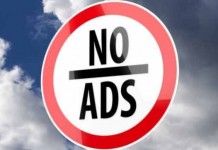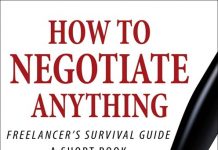 I recently posted an article on the Toronto Star paywall experiment—they erected it this past summer, and now, partway into the rollout, they were reporting on the results.
I recently posted an article on the Toronto Star paywall experiment—they erected it this past summer, and now, partway into the rollout, they were reporting on the results.
In my analysis, I remarked that I personally had not visited the Star’s website since the paywall went up; that I get such news elsewhere now and that I don’t miss the site enough to pay $9.99 a month for it.
A frequent Teleread commenter made a remark in response which interested me. He said “Isn’t it odd how allergic some folks are about paying for a respected online news service yet they’d think nothing of buying the same content on newsprint and pay more for the privilege of disposing of the newspapers at the end of the month?”
And it struck me that he, like many who engage on the debate of ‘paying’ for online news, is totally missing the point I was making. I am not ‘allergic’ to paying as a concept. I am just ‘allergic’ to paying $9.99. It is in an issue of pricing, not an issue of personal philosophy.
There is plenty of news I do pay for. Some of it is even digital news. I get a few subscriptions through Zinio which I enjoy; I have paid in the past for a handful of ebook subscription services, including one produced by the very same Toronto Star which was the subject of the story. If it’s a good value to me, I have no issues ‘paying for news.’
But I just don’t think a daily newspaper website is worth 10 big ones, because it IS so easy to get that content for free. Even if you disregard the free commuter paper (which, as Alexander pointed out in his comment, is partnered with the Star and runs abbreviated content from them) and sites like CNN or CP24 (which are free for now but may succumb to the lure of the paywall later) there is still human sharing. I only went online last night to read the news after a co-worker breathlessly exclaimed ‘did you hear the latest about Rob Ford?’ as I was on the way out the door to go home. And in the time it took us to walk down the stars to go, he had told me the whole story.
The problem is, the newspapers specialize more in the bread-and-butter daily news stuff that people think of as just part of life. They specialize in the sort of story where the writing quality doesn’t matter as much as the content does. Once my co-worker told me every sordid detail about the latest Rob Ford story while we were walking down the stairs together, there was no need for me to pay the Star to read the same information. When they do produce content where the quality matters—as they did in their more relaxed and literary-feeling Star eReads series—I did in fact pay.
So would I pay for the news if it was cheaper than $9.99, because there is value in the one website handily collating it all together for me? Maybe. And if they were bent on $9.99 as the price point, but they shifted their focus a little to include more feature-length ‘journalism’ and less bread-and-butter news, could they get me? Perhaps. But I think people sometimes misread these situations by conflating the issue of paying as a theory with pricing as a practice. The issue—with me, anyway—is not that I am somehow ‘opposed’ to paying for news. It’s that this particular website has not convinced me that the price they are charging is a fair value for the content at hand.

































How much does a print subscription cost? If it’s more the $20 than the $9.99 is a good deal.
The WashingtonPost is now $1.25 daily and $2.50 Sunday. That would be roughly $44.75 a month at the newsstand. Weekly home delivery for $6.95 or $1.99 a week for a full year upfront. $9.99 per month digital.
I think the digital price is reasonable, more or less, if I wanted a daily newspaper on my Kindle.
But the only thing I miss about the Washington Post is the Sunday Book World. There is no home delivery in Seattle.
I cheerfully pay $10 a month for the New York Times online. I pay $5 a month for Netflix, and I figured the NYT was worth at least twice as much to me. I should maybe say I don’t live anywhere near New York City. My parents (in their 70s) have also moved to online only for their local newspaper, the Philadephia Inquirer, but only because they got fed up with the very erratic delivery of the paper version. The online version, of course, always arrives on time.
Kit, what type of Netflix subscription do you have for $5 per month. My streaming subscrption is 7.99 and if I wanted a dvd subscription, it would be an additional 7.99.
As to digital subscriptions, I have a few: Slate, NY Times latest news on Kindle and all access to New Yorker (but not print). I used to subscribe to the Chicago Tribune on Kindle but switched to a digital subscription online which gives me much more.